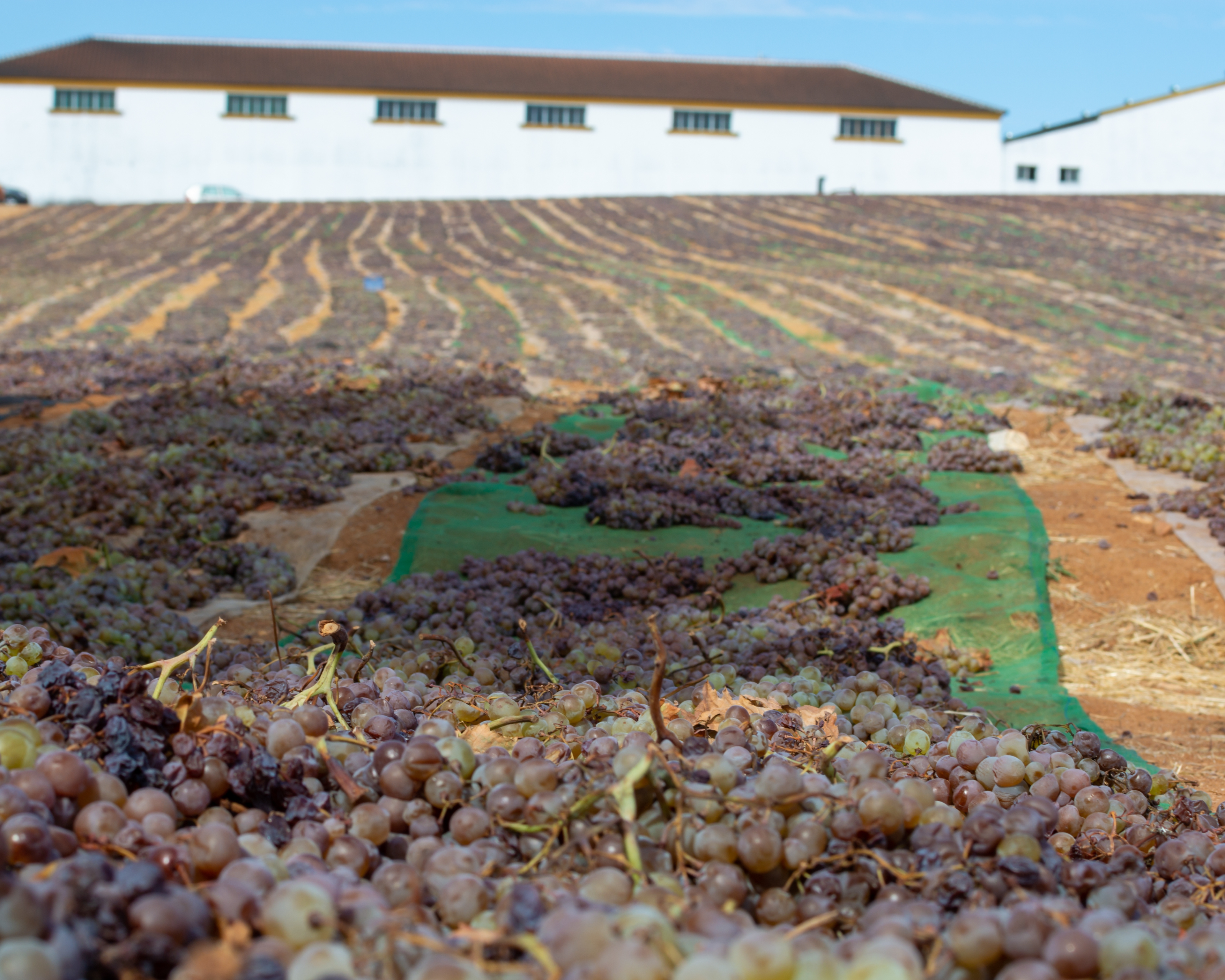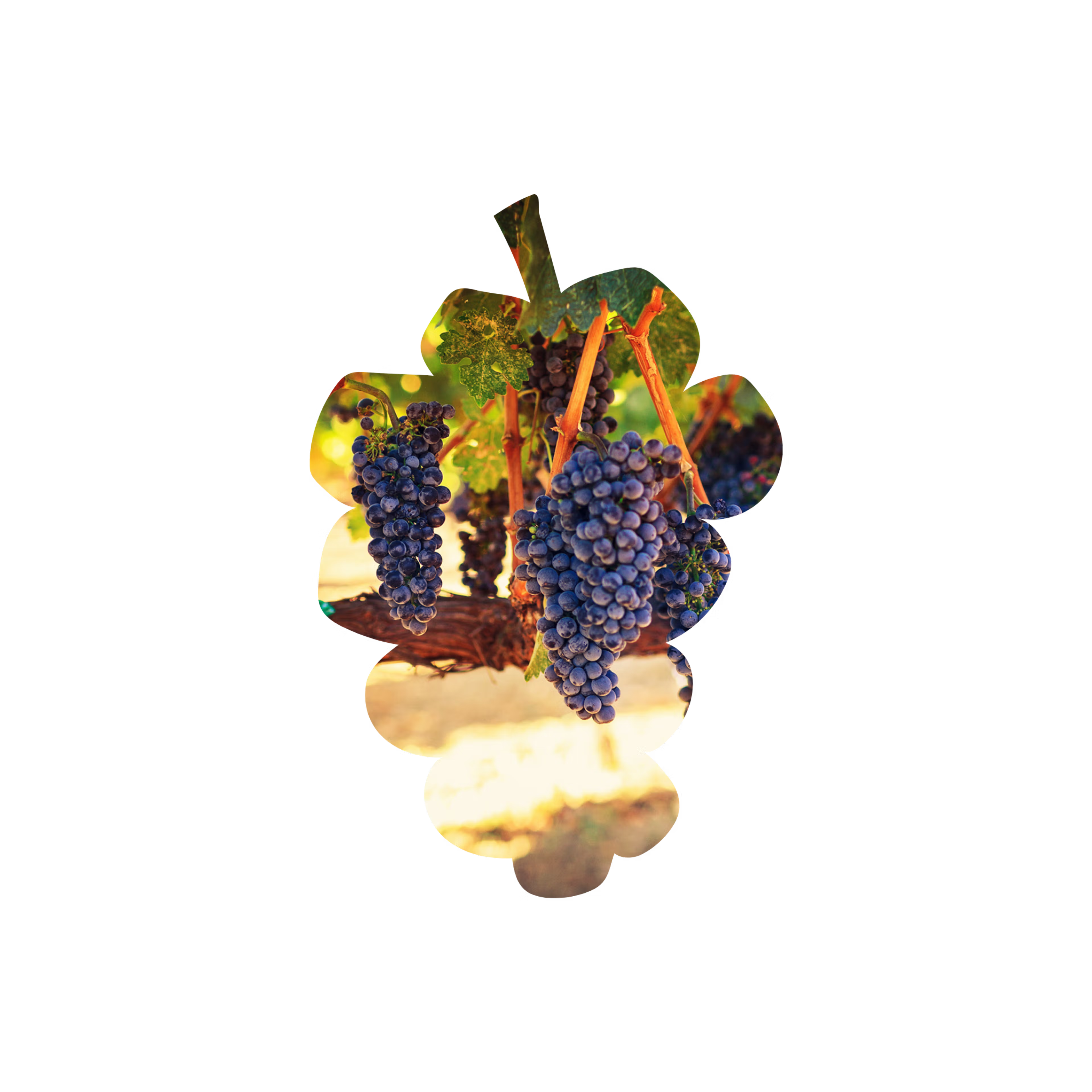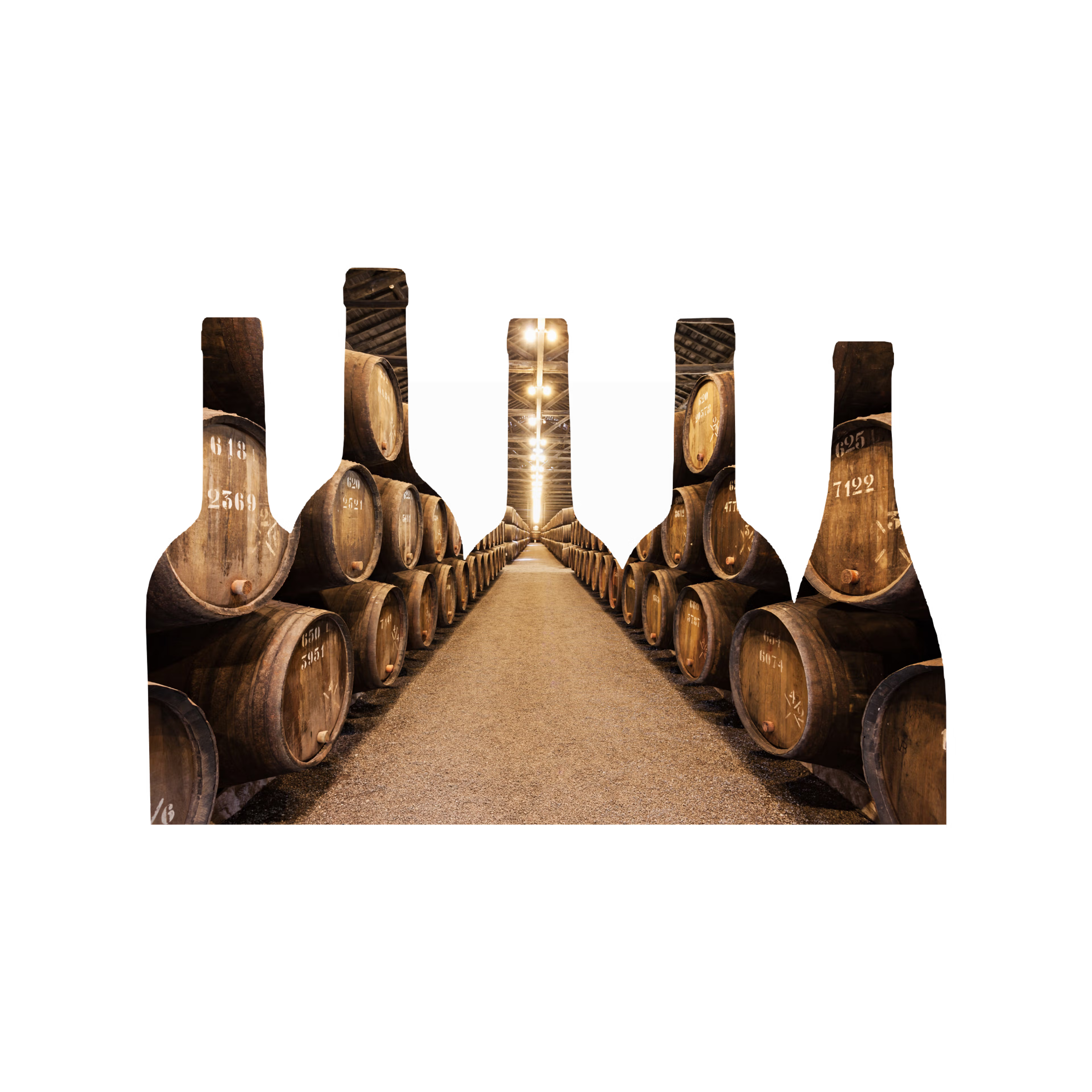

Sherry: The Fortified Treasure of Spain
From Fino to Pedro Ximénez, uncover the complexity and tradition of Sherry wines, the jewel of southern Spain.
Sherry is not just a drink, it is an invitation to travel through centuries of history and craftsmanship.
– Spanish proverb
The Fortified Wines of Jerez: A Tradition of Excellence
Jerez, located in the sun-drenched region of Andalusia in southern Spain, is renowned for its fortified wines, collectively known as Sherry. Sherry has a unique production process that involves fortification with brandy, resulting in a wide range of styles, from dry to sweet, and everything in between. With its rich history and association with Andalusian culture, Sherry represents a traditional winemaking legacy that dates back to ancient times.
The wines of Jerez are made primarily from two grape varieties: Palomino, used for dry Sherry styles such as Fino, and Pedro Ximénez, used for sweet and luscious wines like PX. These wines are produced in three main sub-regions: Jerez de la Frontera, Sanlúcar de Barrameda, and El Puerto de Santa María. Each sub-region has its own distinct characteristics that contribute to the diverse range of Sherry wines, known for their complexity, depth, and aging potential.

Explore the Famous Sub-Regions of Sherry
Jerez de la Frontera, Sanlúcar de Barrameda, El Puerto de Santa María: The Heart of Sherry
The Sherry wine region is divided into three main sub-regions, each offering unique terroirs and characteristics that influence the flavors and styles of the wines produced.
🍇 Jerez de la Frontera – Often considered the capital of the Sherry region, Jerez de la Frontera is where some of the most iconic Sherry houses, like González Byass and Valdespino, are based. This sub-region is known for its dry and more complex Sherry styles, particularly Fino and Amontillado, which are aged to perfection in the famous solera system. The hot, arid climate here, combined with the albariza soil, provides the perfect conditions for growing Palomino grapes, the foundation of most Sherry wines.
🍇 Sanlúcar de Barrameda – Situated on the banks of the Guadalquivir River, Sanlúcar de Barrameda is known for its production of Manzanilla, a delicate and slightly salty style of Fino Sherry. The coastal influence and cooler climate of this sub-region contribute to a lighter, fresher style of Sherry with pronounced floral and nutty characteristics. The maritime climate is crucial in shaping the unique flavor profile of Manzanilla, which makes it a favorite accompaniment to seafood.
🍇 El Puerto de Santa María – Located near the Bay of Cádiz, El Puerto de Santa María is known for its rich and full-bodied Oloroso Sherries. The climate here is milder than Jerez, which allows for the production of Sherries with deeper flavors and greater aging potential. The combination of terroir, with its rich clay and sand soils, allows for the creation of robust, well-rounded Sherries that have a more intense oxidative profile.

The Grapes Behind the Rich Wines of Jerez
Palomino and Pedro Ximénez: The Grape Varieties of Sherry
Sherry is crafted from just a few select grape varieties, each contributing to the diverse styles that define the region. The two most important varieties are Palomino and Pedro Ximénez, each bringing its own unique characteristics to the Sherry production process.
🍇 Palomino – Palomino is the most widely planted grape variety in the Sherry region and is the primary grape used for the dry Sherry styles such as Fino, Amontillado, and Oloroso. This grape is valued for its neutrality, allowing it to absorb the influence of the terroir and the aging process. The wines made from Palomino are light, crisp, and can range from bone-dry to nutty and rich, depending on how they are aged and fortified.
🍇 Pedro Ximénez (PX) – Known for its intense sweetness, Pedro Ximénez is the grape variety used to produce the iconic sweet Sherry, Pedro Ximénez. The grapes are typically sun-dried to concentrate the sugars before fermentation, resulting in a wine that is rich, syrupy, and full of flavors like raisins, figs, and molasses. PX Sherry is often used in blending with other styles of Sherry or enjoyed on its own as a dessert wine.

Explore the Notable Producers of Sherry
González Byass, Lustau, Barbadillo, Valdespino: The Icons of Sherry Production
Rías Baixas is home to some of the most prestigious Sherry houses, each contributing to the global reputation of the region for producing wines of exceptional quality. These producers are known for their commitment to traditional methods, as well as their ability to adapt and innovate in the world of Sherry production.
🍇 González Byass – One of the most iconic names in the Sherry industry, González Byass is best known for its flagship Fino, Tío Pepe. Founded in 1835, González Byass has been a pioneer in the development of the Sherry market worldwide, maintaining a strong reputation for producing consistent and high-quality Sherry wines. The winery is particularly celebrated for its mastery of the solera aging system, which is central to Sherry production.
🍇 Lustau – Founded in 1896, Lustau is renowned for its premium range of Sherries, including some of the finest Amontillado and Oloroso. The winery's commitment to quality and innovation has earned it a loyal following among Sherry enthusiasts. Lustau is known for using a combination of modern and traditional techniques to produce wines that express the unique character of Jerez and the surrounding regions.
🍇 Barbadillo – Barbadillo is one of the oldest and most respected Sherry houses in Sanlúcar de Barrameda, known for its exceptional Manzanilla production. The winery has a strong connection to the coastal influences of the region, producing light, crisp, and highly aromatic Sherries that capture the essence of Sanlúcar's unique climate. Barbadillo is also renowned for its long aging processes and commitment to preserving traditional methods.
🍇 Valdespino – A family-owned winery that has been producing Sherry since 1430, Valdespino is one of the oldest wineries in Jerez. The winery is best known for its high-quality Fino and Amontillado wines, which are aged in the best soleras of the region. Valdespino is also recognized for its work with the Palomino grape, producing some of the most elegant and refined Sherry wines.
Explore the Famous Vintages of Sherry
Sherry is typically a non-vintage wine, as it is made using the solera aging system, which blends wines from different years to create a consistent style. This system, which involves the gradual blending of older wines with newer ones, allows Sherry producers to maintain the quality and consistency of their wines year after year. While Sherry does not rely on vintage declarations, certain soleras and aged Sherries are known for their remarkable consistency and complexity.
📅 Solera Systems and Consistency – Many of the most famous Sherry producers, such as González Byass and Lustau, have established long-standing solera systems that produce wines with exceptional consistency. These soleras, often aged for decades, create a style of Sherry that is unique to each producer. Aged Fino, Amontillado, and Oloroso Sherries, often blended over many years, develop a deep, complex profile that reflects the years of aging.
📅 Aged Pedro Ximénez (PX) – While Sherry is not typically vintage-dated, Pedro Ximénez wines, which are made from sun-dried grapes, are sometimes bottled as vintage-specific releases. These rich, sweet wines are known for their deep, raisin-like flavors and have an impressive aging potential, often becoming more complex and syrupy with time.
Store Your Sherry at the Perfect Temperature
Explore Our Wine Coolers →
Display Your Sherry Collection in Style
Find Your Perfect Wine Rack Here →
Sherry: The Rich Tradition of Fortified Wines in Jerez
Sherry, one of Spain's most iconic wines, hails from the region of Jerez in Andalusia. Known for its unique production methods and the use of the solera aging system, Sherry is a fortified wine that comes in a wide array of styles, ranging from dry to sweet. The process of fortifying the wine with brandy ensures that Sherry has the ability to age for many years, developing complex flavors and aromas that make it distinct from other wines.
The primary grape varieties used in Sherry production are Palomino and Pedro Ximénez. Palomino is the backbone of dry Sherries, such as Fino and Amontillado, while Pedro Ximénez is responsible for the rich, sweet styles of Sherry. The Jerez region’s climate plays a vital role in the cultivation of these grapes. The hot, dry conditions of the region are balanced by the cooling effect of the ocean breeze, creating the perfect environment for these grape varieties to flourish.
The Role of the Solera System in Sherry Production
The solera system is a unique aging process that is integral to Sherry production. It involves the blending of younger wines with older ones over multiple years. The process starts with a large barrel, known as the "solera," filled with the oldest wine, while "criaderas," or younger barrels, are stacked above it. Each year, a portion of the wine from the solera is bottled, and the space is refilled with younger wine from the criaderas. This gradual blending creates a wine of exceptional consistency, where the older wines contribute complexity and depth, and the younger wines provide freshness and vibrancy.
This aging system is crucial to the consistent quality of Sherry. The long aging process allows Sherry wines to develop rich, nutty, and sometimes oxidative flavors that are characteristic of styles like Oloroso and Amontillado. In contrast, Sherries like Fino and Manzanilla are aged under a layer of yeast known as "flor," which imparts a delicate, fresh character.
Sherry’s Versatility and Food Pairing
Sherry is incredibly versatile and can be paired with a wide variety of foods. The dry Sherries, such as Fino and Amontillado, are perfect accompaniments to seafood, tapas, and cured meats. Their crisp acidity and nutty flavors make them excellent for pairing with salty dishes and rich appetizers.
On the sweeter side, Pedro Ximénez (PX) is an indulgent dessert wine that pairs wonderfully with chocolate, blue cheese, or roasted nuts. The rich, syrupy texture of PX Sherry also makes it a delightful choice for drizzling over desserts like ice cream or poached pears.
The Legacy of Sherry in Jerez
The region of Jerez has been producing wine for centuries, with a history that dates back to Roman times. The Sherry industry flourished in the 18th century, when British merchants helped establish it as a renowned fortified wine worldwide. Today, Sherry continues to thrive as one of Spain’s most beloved wines, with a growing global appreciation for its diverse range of styles.
As Sherry gains new recognition among wine lovers and chefs worldwide, the tradition of producing high-quality fortified wines remains firmly rooted in the region of Jerez. Whether enjoyed as an aperitif, paired with food, or sipped as a dessert wine, Sherry offers something for every occasion, making it an essential part of the global wine landscape.